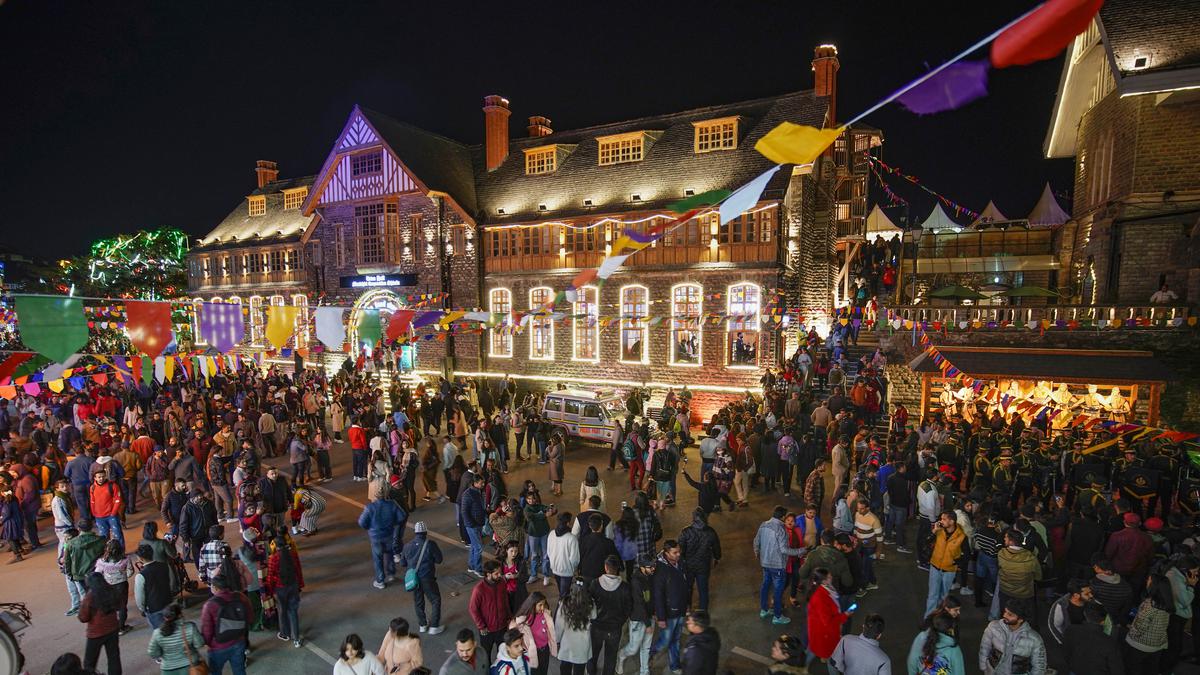
First-ever Shimla Winter Carnival begins as tourists throng Himachal Pradesh
The Hindu
Experience the rich cultural heritage of Himachal Pradesh at the first-ever Shimla Winter Carnival, boosting tourism activities in the State.
Himachal Pradesh government’s initiative to roll out the first-ever Shimla Winter Carnival is expected to give a fillip to the tourism sector, which has suffered badly since a relentless monsoon brought the hill State to its knees this year and caused extensive damage to life and property.
“This winter carnival in Shimla is a historic moment for the city as it aims to boost tourism activities in the State. The recent monsoon fury had adversely affected Himachal Pradesh’s tourism sector but due to the government’s efforts, the State has recovered from this setback,” said Chief Minister Sukhvinder Singh Sukhu, while inaugurating the 12-day-long festival on Monday. The event started with a cultural parade and a Mahanati (folk dance) performance presented by 450 women from self-help groups.
Amid the Christmas and New Year celebrations, Himachal Pradesh witnessed an influx of 30,000 tourist vehicles in the past couple of days, signalling a promising revival of the tourism industry in the State. As tourists continue to throng the hill State, prominent destinations like Rohtang, Sissu, Manali, and Shimla are witnessing traffic congestion.
“The State government is committed to promoting tourism in the State as it has allocated a substantial ₹3,000 crore budget to the tourism sector, a significant increase from the earlier ₹50 crore. The government has permitted all restaurants, dhabas and food shops in the State to remain open 24 hours from December 20, 2023, to January 5, 2024, to facilitate the people visiting the State,” the Chief Minister added.
The carnival offers local dishes, laser shows, and various cultural programmes, contributing to the celebration of Himachal Pradesh’s rich cultural heritage.

“Writing, in general, is a very solitary process,” says Yauvanika Chopra, Associate Director at The New India Foundation (NIF), which, earlier this year, announced the 12th edition of its NIF Book Fellowships for research and scholarship about Indian history after Independence. While authors, in general, are built for it, it can still get very lonely, says Chopra, pointing out that the fellowship’s community support is as valuable as the monetary benefits it offers. “There is a solid community of NIF fellows, trustees, language experts, jury members, all of whom are incredibly competent,” she says. “They really help make authors feel supported from manuscript to publication, so you never feel like you’re struggling through isolation.”

Several principals of government and private schools in Delhi on Tuesday said the Directorate of Education (DoE) circular from a day earlier, directing schools to conduct classes in ‘hybrid’ mode, had caused confusion regarding day-to-day operations as they did not know how many students would return to school from Wednesday and how would teachers instruct in two modes — online and in person — at once. The DoE circular on Monday had also stated that the option to “exercise online mode of education, wherever available, shall vest with the students and their guardians”. Several schoolteachers also expressed confusion regarding the DoE order. A government schoolteacher said he was unsure of how to cope with the resumption of physical classes, given that the order directing government offices to ensure that 50% of the employees work from home is still in place. On Monday, the Commission for Air Quality Management in the National Capital Region and Adjoining Areas (CAQM) had, on the orders of the Supreme Court, directed schools in Delhi-NCR to shift classes to the hybrid mode, following which the DoE had issued the circular. The court had urged the Centre’s pollution watchdog to consider restarting physical classes due to many students missing out on the mid-day meals and lacking the necessary means to attend classes online. The CAQM had, on November 20, asked schools in Delhi-NCR to shift to the online mode of teaching.









